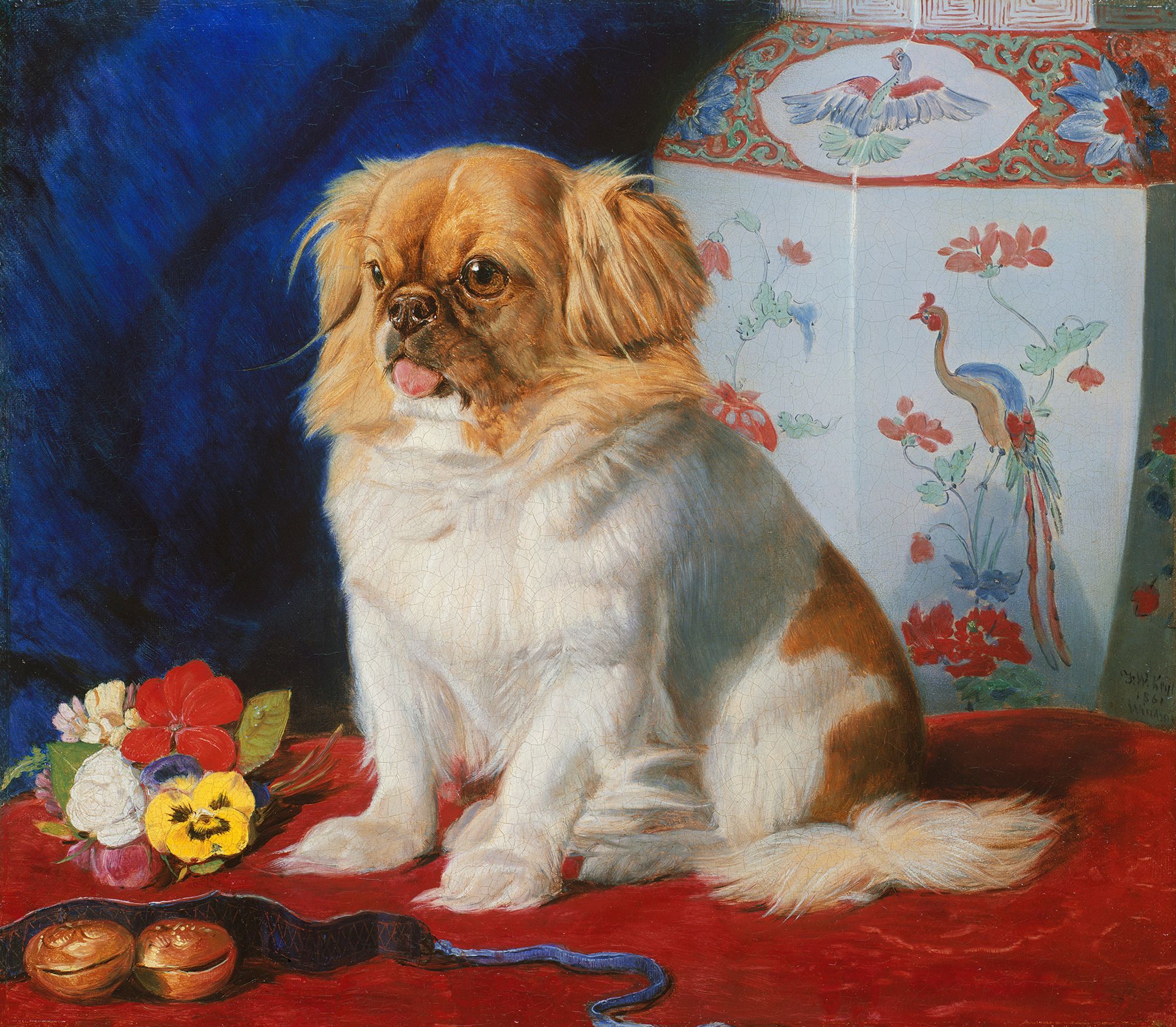Editor’s Note: A version of this story appeared in CNN’s Meanwhile in China newsletter, a three-times-a-week update exploring what you need to know about the country’s rise and how it impacts the world. Sign up here.
In an 1861 painting commissioned by the British monarch Queen Victoria, a brown and white Pekingese sits demurely on a cushion in front of a Japanese vase, gazing into the distance. Admired for her adorably smushed snout and leonine features, she was a new addition to the queen’s canine entourage — a breed of toy dog, never previously seen in Great Britain, that quickly became one of the most sought-after luxury items among the upper classes.
But her gentle demeanor belied a brutal past.
A year before German artist Frederick William Keyl completed the painting, Anglo-French forces had stormed Beijing’s Old Summer Palace, razing the 860-acre “Garden of Perfect Brightness” to rubble. Legend has it that as the Xianfeng Emperor and his court fled the invaders, an elderly aunt chose to stay, committing suicide in her quarters surrounded by a faithful litter of Pekingese puppies. The dogs were scooped up by soldiers and spirited away to the West, along with thousands of other looted treasures.
This origin story may be — at least in part — apocryphal. But the Pekingese in the painting was undoubtedly brought to Britain by Captain John Dunne of the 99th Regiment, which participated in the sacking of the palace on orders to avenge the killing of several British envoys by China’s then-ruling Qing dynasty government.
“People say it is the most perfect little beauty they ever saw,” he wrote of the dog in his journal. Dunne gifted her to the queen, and the animal was given a new name: Looty.
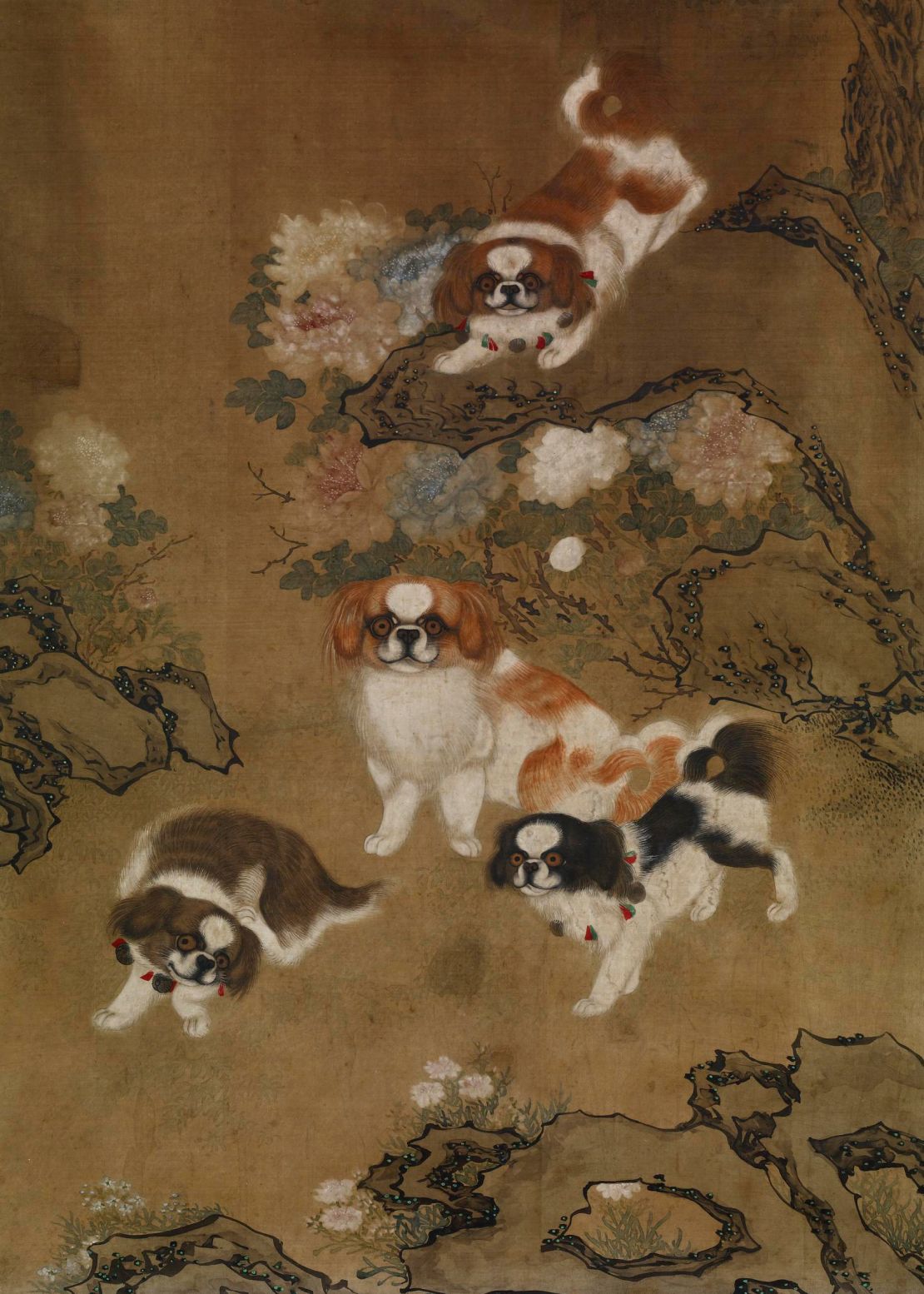
Looty’s arrival, along with that of other Pekingese subsequently brought to or bred on British shores, sparked a frenzy among high society women that continued long after Victoria’s death. (Between 1914 and 1962, the Pekingese was the most popular toy breed in Britain, with 5,809 of the dogs registered by the country’s Kennel Club at the height of the craze in 1950.)
In the Edwardian era of the early 1900s, one lord is said to have spent “as much as £3,000” — more than £300,000 ($365,000) in today’s money — for “a few” dogs, according to the 1954 book “Pekingese Scrapbook.” Among the British, the dogs were coveted as souvenirs of “Old China” — a romanticized, mystical vision of a then-fading imperial nation that, weakened by the Opium Wars, collapsed in 1911 and was replaced by a Chinese republic.
As such, a Pekingese’s “stolen” status was part of its cachet. Writing in the Journal of British Studies in 2006, Sarah Cheang, a design historian at the UK’s Royal College of Art, said the dogs were advertised as having been “smuggled” out of China and associated with sensational tales of thievery by palace servants. Aficionados also gave them what Cheang described as stereotypically “oriental” traits, for instance claiming they disliked thunderstorms because of trauma from tropical typhoons, or suggesting that the tawny “pekes” — as the breed is often referred to — refused to mate with dogs of other colors due to being “conscious that yellow was the sacred color of the Chinese emperor.”
(A 1912 newspaper story, meanwhile, suggested that Looty had been a “lonely” creature at Buckingham Palace, ostracized by the queen’s other dogs who took exception to her “Oriental habits and appearance.” In another questionable account, author Annie Coath Dixey claimed that imperial puppies were “suckled by the waiting-women of the court in place of their own superfluous girl babes which were drowned.”)
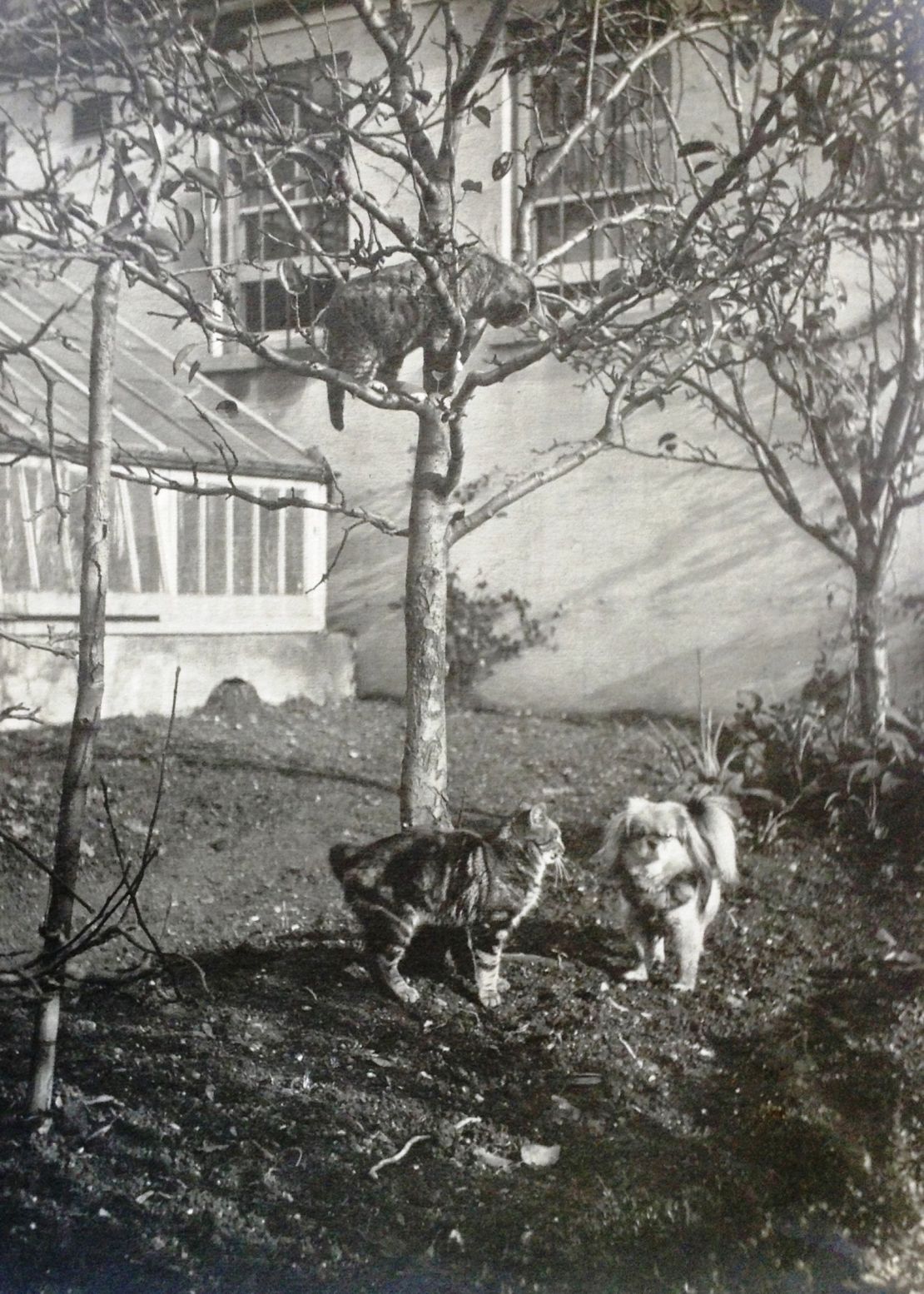
According to Cheang, Pekingese ownership became an expression of “colonial nostalgia” through which women could “constitute themselves and the Pekingese dogs both as the rightful inheritors of colonial wealth,” she wrote, adding: “Like living imperial heirlooms, they conferred ‘high-born’ status upon their mistresses.”
Owners founded breeding clubs and organized exclusive events, like a Pekingese garden party held at a wealthy woman’s London home in 1901. The party’s guests included the Chinese ambassador and pekes from across Britain that sat tethered on the lawn as their owners socialized over tea.
‘Fantasy and nostalgia’
The breed’s rise in popularity was part of a wider appropriation of Chinese (and other Asian) arts and products, or “Chinoiserie.” Like in Queen Victoria’s painting of Looty, artists frequently depicted the dogs alongside East Asian objects or donning imperial-style robes to recreate Imperial China, Cheang told CNN in a phone interview.
“It was a combination of China fantasy and nostalgia,” she added, explaining that Pekingese’s royal associations were strengthened by the fact that imperial figures like the Empress Dowager Cixi — who ruled for nearly 50 years, and was often compared to Queen Victoria — had also owned the dogs.
Cixi, a concubine of the Xianfeng Emperor who bore his only son before becoming de facto leader upon his death (less than a year after the Old Summer Palace was ransacked), is perhaps China’s most influential Pekingese owner. According to a book published by Beijing’s Palace Museum, the empress kept more than 1,000 dogs, many of which were Pekingese, in imperial kennels in the Forbidden City. Allowed to roam free in the palace gardens, these Pekingese were served by four designated eunuchs who would be severely punished if any mishaps befell them, the museum’s publication added.
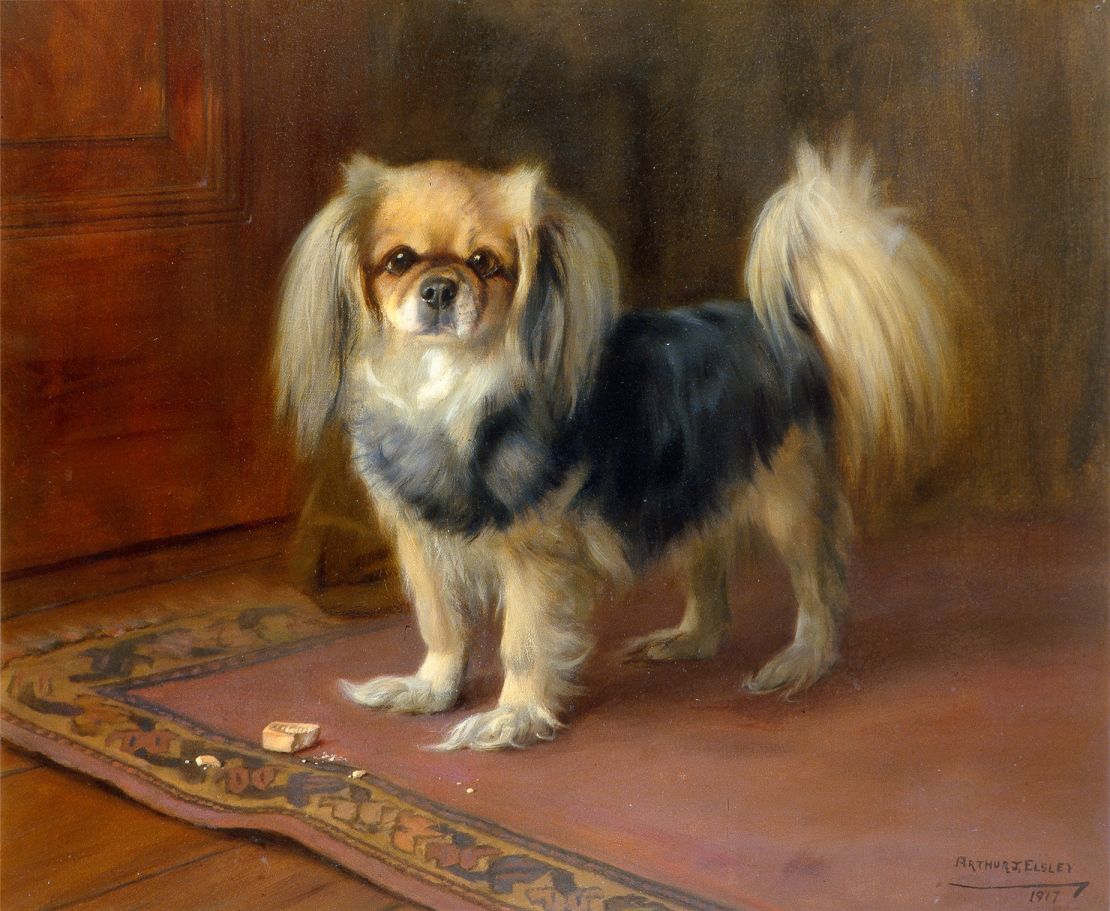
Cixi’s favorite, Hai Lung (or “sea otter”), followed her wherever she went, and was considered “next in importance to the Empress herself,” the empresses’ lady-in-waiting Princess Der Ling said, according to author Rumer Godden’s “The Butterfly Lions,” a 1978 book on the breed’s history.
“Her Majesty adored the little brute. He had a special eunuch to wait on him and slept in a large basket, big enough for a baby,” Princess Der Ling is quoted as saying, adding that the dog ate special meals of chopped liver, rice and gravy which were personally inspected by Cixi. “If anything had ever happened to that dog it would have upset the entire routine of the court!”
When Cixi was forced to flee Beijing during the anti-imperialist Boxer Rebellion at the turn of the 20th century, she took a batch of Pekingese dogs with her on sedan chairs, according to the Palace Museum, and allegedly ordered the rest to be executed so that no more would be looted and end up in foreigners’ hands.
Changing perceptions
While the breed’s exact origins are unknown, records suggest Pekingese — or dogs resembling them — were imperial pets as far back as the Tang dynasty, more than 1,100 years ago. Bred to look like small lions, a symbol of strength and protection in Buddhism, they were often owned by the wealthy. Chinese royals were even known to carry smaller specimens in the sleeves of their robes.
But by the end of the 20th century, pekes had become less popular in Britain due to changing tastes, according to the Kennel Club’s library and collections manager, Ciara Farrell. “They were considered (symbols of) luxury but also stuffy and old-fashioned,” she said in a phone interview. “From the 1970s onwards, more women were entering the workforce. People were looking for pets that didn’t require so much (grooming) work.”
The decline accompanied growing familiarity with modern China, meaning that “by the time you get to the 1990s, it was difficult to maintain a fantasy of China,” Cheang said, adding: “Everybody is aware of what Communist China looks like. The dog no longer fits.”
Looty died in the Spring of 1872. Unlike many of Queen Victoria’s dogs, she was buried in an unmarked grave at Windsor Castle, the whereabouts of which remains unknown. Yet her journey and the darker side of what it represents — the trauma of British imperialism and cultural appropriation — remains relevant to this day.
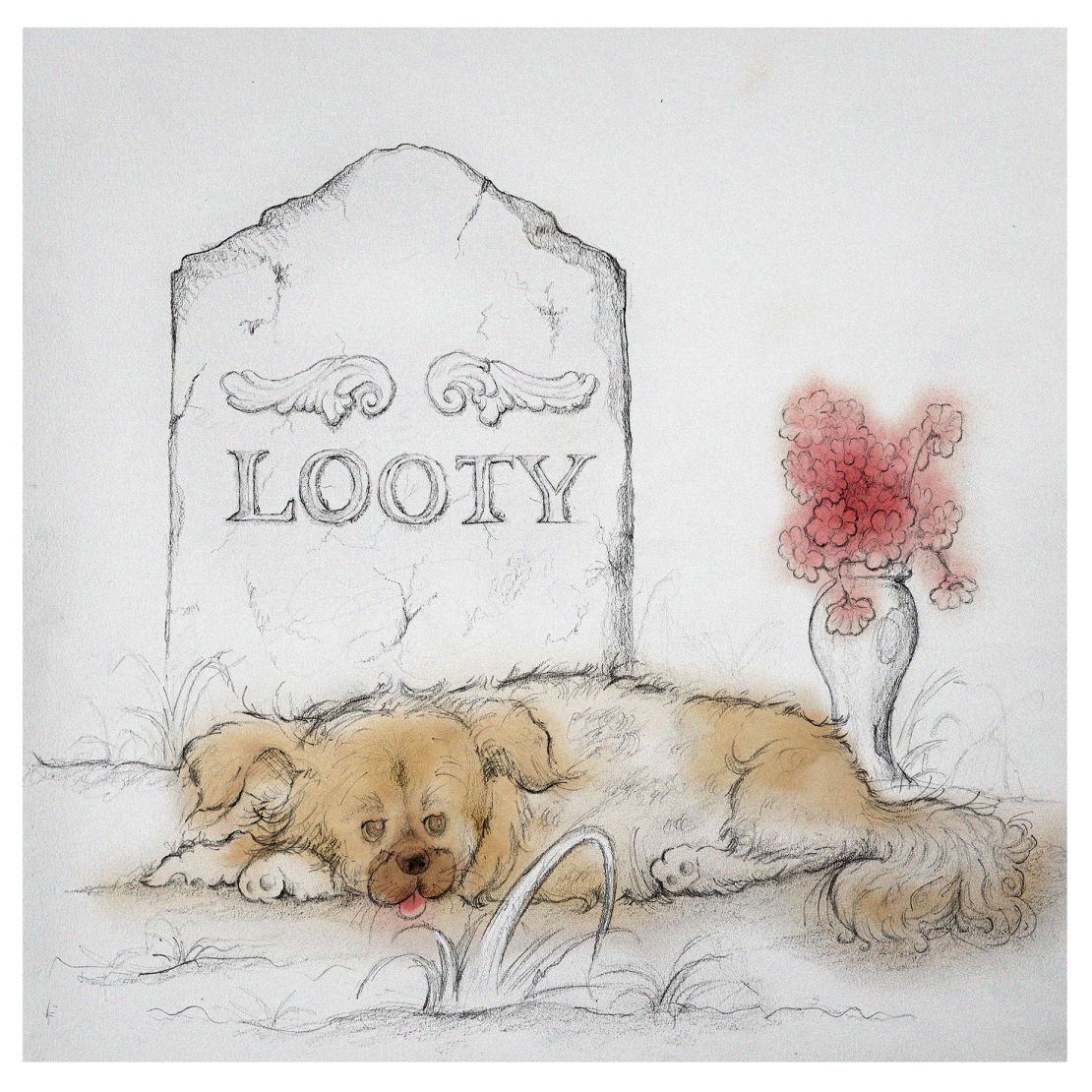
This summer, the 1861 painting of Looty was displayed in an exhibition about 19th-century China at the British Museum in London that brought some of these issues to the fore. The exhibition fell under scrutiny for using a Chinese translator’s work without credit, and was the subject of a Chinese state media campaign demanding the repatriation of Chinese artifacts. One Chinese art blog also criticized the museum’s inclusion of the Looty painting as an attempt to make a section of the exhibition about the Old Summer Palace’s destruction appear “cuter.”
Others, though, have looked to reclaim Looty’s narrative. Her story was revived in “Looty Goes to Heaven,” a 2022 speculative novel by Amy Ching-Yan Lam, while a recent NFT art project, which creates digital versions of museum items stolen by European colonizers, is also named after her.
Pekes may be out of fashion, but Looty lives on.
